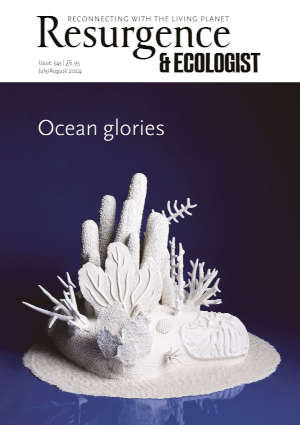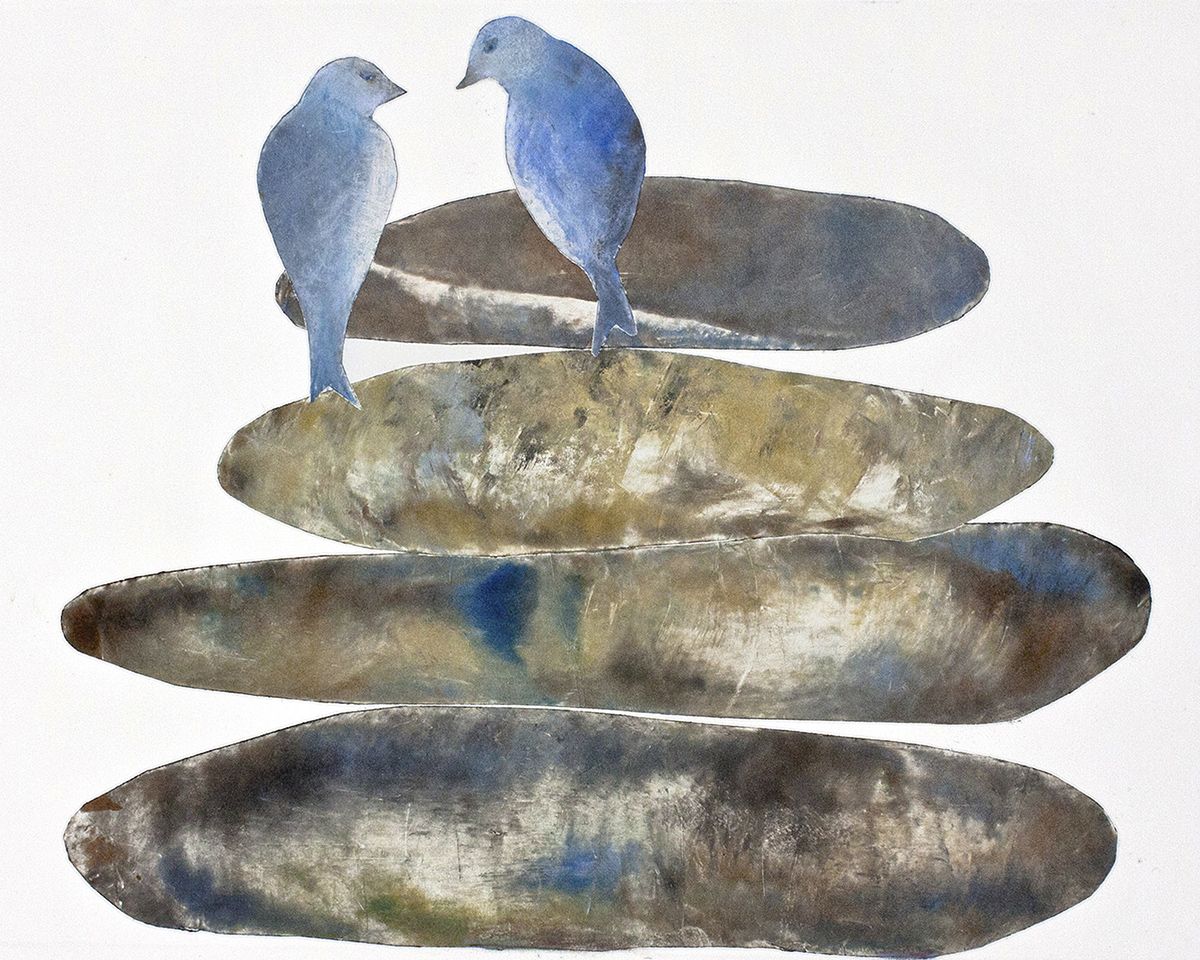It’s 22 years since the publication of Earth Songs: A Resurgence Anthology of Contemporary Ecopoetry, edited by the late Peter Abbs, who served as the long-term curator of the Resurgence poetry pages. His anthology, which heralded the wave of new Nature writing that nowadays fills our bookshelves, was intended to direct “our attention to the state of Nature and its place in our lives”.
Defying literary fashion of the early 1990s, Abbs’s introduction wryly cites a metropolitan critic’s pronouncement that there could be no more Nature poetry. With its focus on Nature’s sacred qualities and human interdependence with ecology, Earth Songs expresses what the critic Jonathan Bate calls “an experience of dwelling upon the earth”. However, what it omits (again drawing on Bate) is: “ecopoetics … pulled from the phenomenological to the political”.
Not long after Earth Songs was published, writers Bill McKibben and Robert Macfarlane were publicly bemoaning the dearth of cultural responses to climate change. In an article in The Guardian in 2005, Macfarlane indicated that any literary response “would need to find ways of imagining which remained honest to the scientific evidence”. In envisioning such art, Macfarlane talked of “forms which are chronic – which unfold within time – and are therefore capable of registering change, and weighing its consequences”, and for “literary languages which are attentive to the creep of change”. He also perceived the need for “more bumptious vernaculars … satire … polemic”.
Harold Pinter’s 2005 Nobel Lecture, Art, Truth and Politics, additionally raised the issue of the “vast tapestry of lies” that surrounds us, in an age where advertising, corporate media distortions and the short-term ambitions of politicians contribute to a climate of apathy and fear. Discovering my own voice as an ecopoet in those years, I felt the importance of skilful polemical poetry in cutting through the bunkum. However, with literary gatekeepers continuing to make politically oriented poetry somewhat taboo, I regularly bumped up against prohibitions, including censorship. In this my gender was doubtless a contributory factor. Calling out the ‘glass ceiling’ for women poets in 2010, Fiona Sampson evoked editors’ expectations that our subject matter should be primarily confined to our “bodies, and sexuality, and love”.
Fortunately, the digital age has provided socially and ecologically engaged artists of all genders, backgrounds and disciplines with opportunities to sidestep these obstacles. Additionally, online platforms mostly transcend political borders and have the potential to include more diverse voices.
ECOPOETIKON – a new web-based showcase of global ecopoetries, which I’m co-curating – is one such example. As a freely accessible resource for ecopoetry, the platform, which launched in the autumn of last year, is already providing a powerful poetic insight into the intersecting crises affecting people worldwide.
Currently featuring poets from Botswana, Colombia, Estonia, India, Italy, Nigeria, Papua New Guinea, Singapore, the Philippines, the UK and the US (each nominated on the basis that they demonstrate commitment and creative innovation in their practice), ECOPOETIKON was originally inspired by a student interview conducted by Kathryn Alderman with Craig Santos Perez, an acclaimed ecopoet from the Pacific Island of Guam.
In late 2022, Perez (whose poem in praise of Oceania is featured on page 36 of this issue) called for poets from the global north to read and support poets from the global south, and to teach their work, and so the idea for a ‘world ecopoetry share’ was born.
Categorising countries according to their economic and developmental status, as in the ‘global north’/‘global south’ binary, is problematic; however, ECOPOETIKON’s ethos is more broadly one of building a network of solidarity, and transcending Eurocentrism and the western literary canon to highlight less privileged voices.
A unique dimension of the project is that featured poets are invited to write a statement about the crises in their region or country, and these make poignant reading alongside their poems. Rina Garcia Chua from the Philippines writes of growing up in Metro Manila, where she experienced a typhoon that forced her to “swim and walk in flooded highways when it dumped a month’s worth of rain in just a few hours”. And Zheng Xiaoqiong, whose poems ‘Time’, ‘Moth’, and ‘Lychee Grove’ are beautifully translated from the Chinese by Eleanor Goodman, writes of the trees, plants, birds and snakes of Mount Baiyun, and of factory work in Guangdong. From the age of 21, she witnessed how “workers are inflicted with occupational illnesses such as pneumoconiosis, dermatitis, lung cancer...” and she wants her poetry to raise awareness of “the human damage brought by industry”.
Funded by the University of Gloucestershire’s School of Creative Arts, and built by a student web designer, ECOPOETIKON features three search tools, one of which is thematic. With poems grouped under themes such as ‘oceans’, ‘soil/agriculture’, ‘pollution/waste’, ‘indigeneity/roots’, ‘ecocide/extinctions’, ‘regeneration’, and ‘interspecies communication’, this function readily provides material for research or learning across a range of disciplines. The site’s bespoke teaching resources, available to subscribers, offer writing prompts too. (And over the coming years, the project team plans to evaluate ECOPOETIKON’s impacts, and welcomes feedback from site users.)
When I ask the growing community of featured poets how they feel about the project, Mario Petrucci, a British-Italian poet-scientist pioneer of ecopoetry, whose extraordinary poem ‘Heavy Water: A Poem for Chernobyl’ I selected for the site, emails me, saying: “In the ten-minutes-to-midnight cacophony of ignored environmental wake-up calls, ECOPOETIKON sings a sweet yet piercingly persistent note. Too often, ecopoetry is met with neglectful silence; it’s profoundly encouraging to join this lively conversation.”
Caleb Parkin, a younger-generation British ecopoet, explains how poetry is uniquely placed in the public imagination to represent the “massively distributed temporospatial (time/space) violences to the entire biosphere” because of its “scalar shifts and ability to hold multiple perspectives and ambiguities”. Hearteningly, he sees the project as part of a cultural tipping point, “which makes conversations about climate change and environmental degradation many, various, and unavoidable”.








